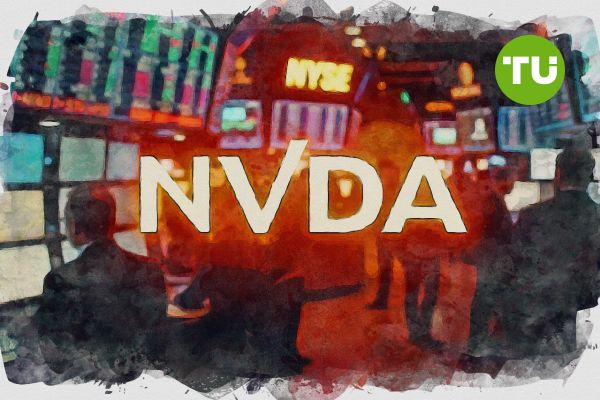Nvidia shares rise above $117 as U.S. weighs lifting $5.5 billion AI chip ban
 Nvidia is facing increasing competitive pressure in the AI sector
Nvidia is facing increasing competitive pressure in the AI sector
As of May 9, Nvidia stock is trading at $117.37, up 0.3% in the last 24 hours. The stock is navigating a complex technical landscape, with recent price movements reflecting a combination of bullish and bearish signals.
Currently, Nvidia has rebounded from a low of around $104.49, forming a falling wedge pattern. This pattern is generally considered bullish, suggesting the potential for an upward breakout. However, the stock must first overcome significant resistance levels at $115, with potential upside targets at $130 and $150 if bullish momentum persists.
On the downside, Nvidia is facing a notable bearish signal in the form of a "death cross." This occurs when the 50-day moving average, now at $127.39, crosses below the 200-day moving average of $127.73. Such a pattern is traditionally a signal of potential further losses, especially if accompanied by high trading volume. Key support levels to monitor include $96, which has served as a strong price floor in recent months, and $87. A more critical support lies at $76, which, if breached, could lead to accelerated selling pressure.
NVDA stock price dynamics (March 2025 - May 2025). Source: TradingView.
Other technical indicators also paint a mixed picture. The Relative Strength Index (RSI) is currently around 45, indicating neutral momentum, but the Moving Average Convergence Divergence (MACD) is edging towards a bearish crossover. The stock’s volatility, as measured by the Average True Range (ATR), has also increased, suggesting that rapid price swings are likely in the near term.
Market context: geopolitical risks and competitive pressures
Beyond technical indicators, Nvidia is grappling with significant macroeconomic and geopolitical challenges that are directly impacting its share price. The most immediate concern is the United States' decision to impose export restrictions on Nvidia's advanced AI chips, including the H20 model, to China. These restrictions are expected to lead to a $5.5 billion charge, significantly affecting the company's revenue from one of its largest markets. The Biden administration initially enforced these restrictions, but recent reports suggest that the Trump administration's potential repeal could alter the scenario, creating further uncertainty.
Nvidia is also facing increasing competitive pressure in the AI sector. Chinese tech giant Huawei has announced the development of its own AI chips, a direct challenge to Nvidia’s dominance in the region. This development, coupled with China's ambition to achieve self-sufficiency in semiconductors, could further erode Nvidia's market share. As a result, Nvidia's stock has experienced heightened volatility, dropping nearly 20% since the start of the year.
Investor sentiment towards Nvidia has also been impacted by broader concerns about the global semiconductor industry. Slowing demand for consumer electronics, persistent inflation, and the Federal Reserve's continued interest rate hikes have added to the bearish outlook for tech stocks. Nvidia, as a leading chipmaker, is particularly vulnerable to these broader economic trends, with its valuation closely tied to growth expectations in the AI and data center markets.
Cautious optimism amid volatility
Looking ahead, Nvidia's stock is likely to remain highly volatile, driven by a combination of technical factors, geopolitical developments, and competitive pressures. In the short term, if Nvidia can maintain support at $96 and successfully break above the $115 resistance level, a rally towards $130 is feasible. This scenario would likely be supported by any positive developments in U.S.-China trade relations or strong earnings data that reassures investors about the company's profitability.
Conversely, if Nvidia fails to maintain its current support levels, a decline towards $87 is possible, with a worst-case scenario of $76 if market sentiment turns significantly negative. Investors should also be aware of potential market catalysts, such as announcements from Chinese competitors, updates on US export policies, and Nvidia's upcoming earnings report.
Nvidia faces broader market volatility as rising interest rates and slowing growth impact tech valuations. Its strong position in AI and data centers is both an opportunity and a risk amid fierce competition.













































































































































